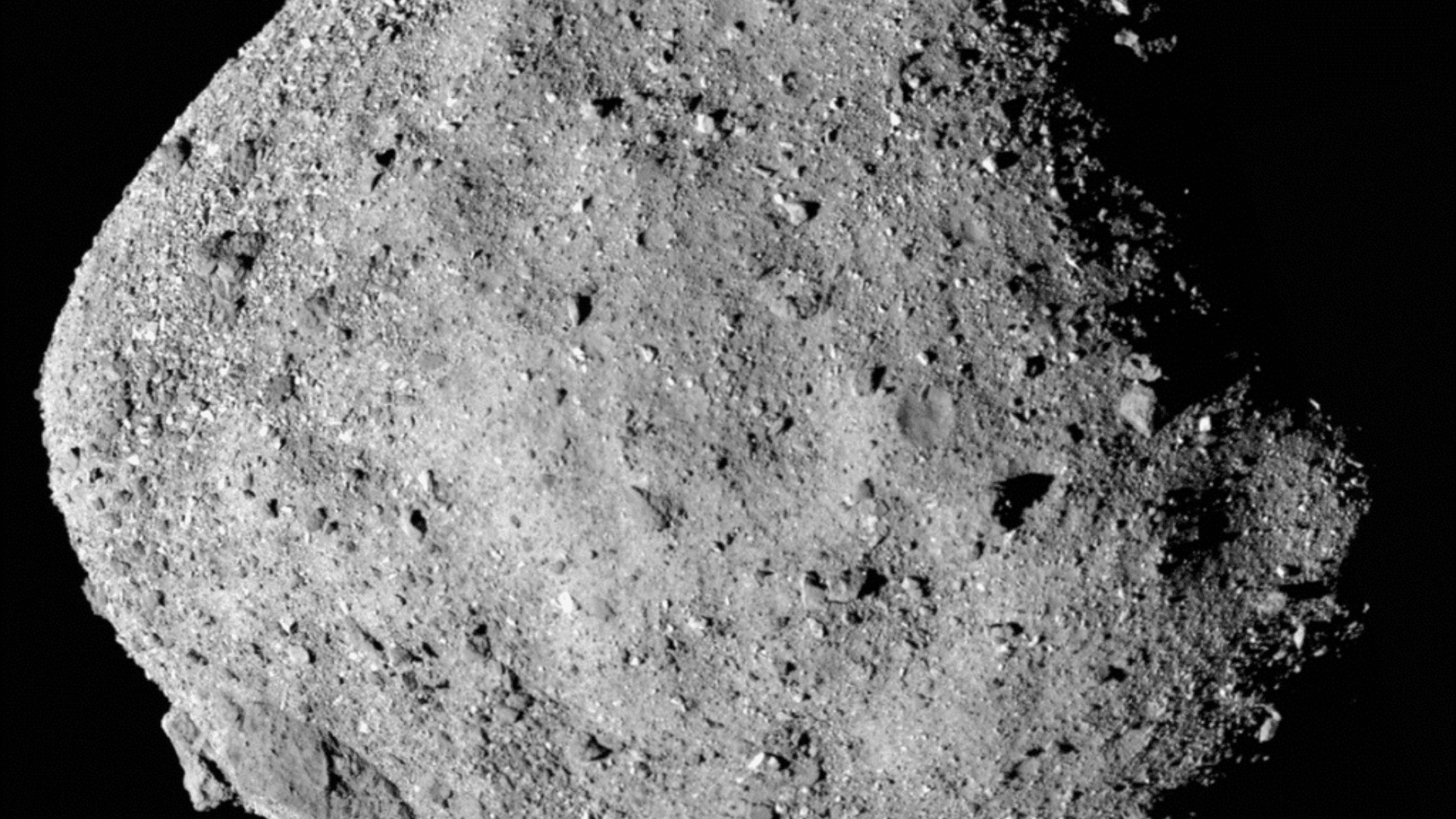A new study published in Nature describes a historic discovery in the material delivered by NASA’s OSIRIS-REx mission from the asteroid Bennu: residues of compounds left over by the evaporation of liquid water.

“[Finding them] was a complete surprise,” Tim McCoy, the paper’s lead author and the curator of meteorites at the Smithsonian’s National Museum of Natural History, tells Popular Science, “Collectively, the team that wrote this paper has hundreds of years of experience examining meteorites and none of us—in fact, nobody—had ever seen some of these minerals.”
The discovery is historic partly because the compounds must have precipitated from the evaporation of brine solutions–solutions of liquid water with high concentrations of dissolved salts. This was determined because some of these minerals have water, the most abundant fluid in the universe, in their crystal structure.
These compounds suggest the presence of liquid water in Bennu’s history or, more likely, in the history of the ancient asteroid from which Bennu originated. A larger asteroid formed partly from ice broke apart into smaller fragments over the last 65 million years. The ice was melted over time by heat from the decay of radioactive elements in the asteroid’s regolith.
The water likely existed as a vein or pocket below the asteroid’s surface, allowing it to remain in a prolonged liquid state. The dissolved minerals may have also allowed the solution to remain liquid for longer, as brine solutions typically have lower freezing points than pure water.
When the water eventually evaporated, it left behind the concentrated precipitates that the team of researchers discovered. The first compound uncovered was sodium carbonate, which had never been observed before in any other asteroid or meteorite.
The team found 11 other water-soluble compounds, all of which had been concentrated in a brine solution and then precipitated as the water evaporated. This is also noteworthy because the presence of these compounds provides a favorable environment for the development of complex organic compounds.

The presence of ice on Bennu’s parent asteroid also indicates that it must have formed beyond the Solar System’s snow line or the line that marks the distance from a star at which temperature falls below water’s freezing point.
A second study published in Nature Astronomy found even more crucial components of life, including amino acids and the five main nucleobases that make up RNA and DNA. These findings indicate that asteroids can carry essential organic molecules across the solar system, potentially delivering them to planets, where life eventually life will form.
“The key mineralogical and chemical material needed for life’s emergence on Earth was being delivered to our planet early in its history,” Michael Ackerson, a research geologist at the National Museum of Natural History who was not involved in the Bennu studies, says to Smithsonian magazine. “Effectively, Bennu’s brines created a nursery for the development of complex organic molecules that were subsequently delivered to a nascent Earth.”







